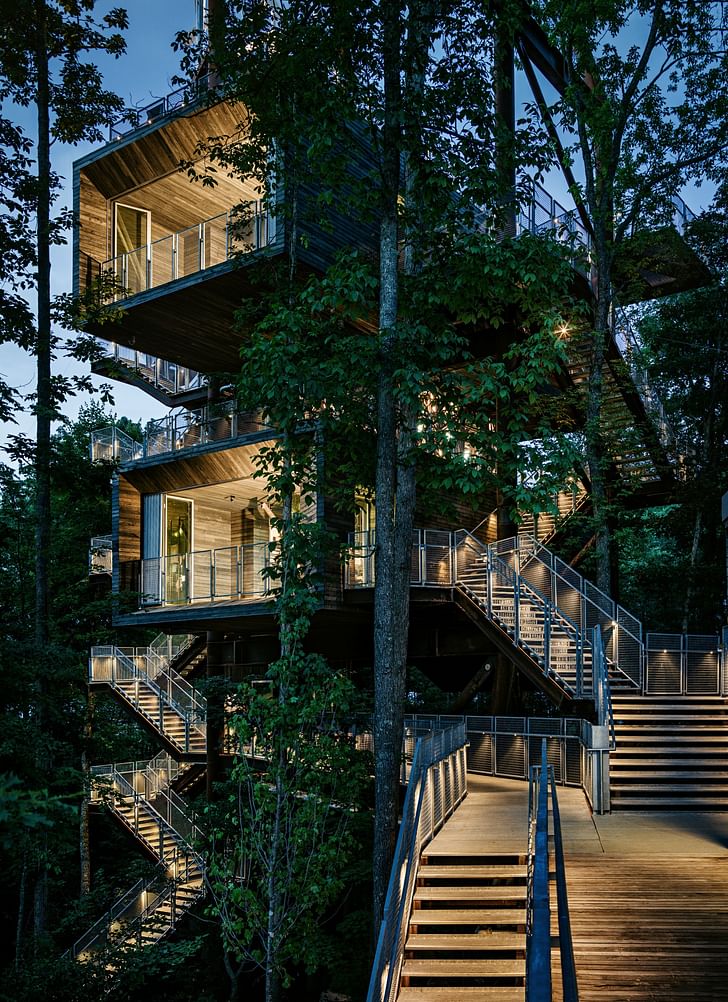

Built on the arborous slopes of the 10,600-acre Summit Bechtel Reserve in Mount Hope, West Virginia, the Sustainability Treehouse stands as a beacon of outdoor adventure, environmental stewardship, and high-performance design, as design architect MITHUN describes. The Seattle- and San Francisco-based practice worked alongside executive architect/architect of record BNIM and developer Trinity Works to bring the public educational facility to life for the Boy Scouts of America. In 2014, the project was named an AIA COTE Top Ten Green Project.
The Treehouse is the first public facility built at the Summit. The towering 125-foot structure is a “living classroom” that invites visitors to climb up and down its indoor and outdoor platforms to experience the surrounding forest from multiple vantage points, as well as interact with educational exhibits that explore the site and ecosystem at the ground, tree canopy, and sky levels.
Collaborating with Trinity Works, Mithun led the integrated design process to create a high-performance building targeting Living Building Challenge certification. Architect of Record BNIM oversaw construction documentation and review to turn the Treehouse into a reality.
The Treehouse's design is influenced by the surrounding site and region. The structure is supported by a 116.5 ton corten steel "megastructure" and locally harvested FSC-certified wood — an aesthetic reference to the historic industrial structures in the region. Its design also expresses “pioneering engineering”, which is a scouting tradition based on team development of structures using elemental materials and methods.
The net-zero energy and net-zero water facility is equipped with a 6,450-watt photovoltaic array output, two 4,000-watt wind turbines, and a 1,000 gallon cistern and water cleansing system.
Indoor and outdoor exhibition “galleries” showcase the natural beauty of the forest. Volume, Inc./Studio Terpeluk designed the interactive exhibits that highlight sustainable technologies and performance systems — like a tippy-cup rain chain, the “recyclotron” bicycle-powered light display, and the wheel of sustainability — that encourage visitors to think more conscientiously about the relationship between their actions and their impact on the environment.
Editor/Writer for Archinect + sister site Bustler. Leans toward: public interest design, illustration, graphic design, history, and general pop-culture geekiness, among other things. Enjoys a good bowl of noodles.
No Comments
Block this user
Are you sure you want to block this user and hide all related comments throughout the site?
Archinect
This is your first comment on Archinect. Your comment will be visible once approved.